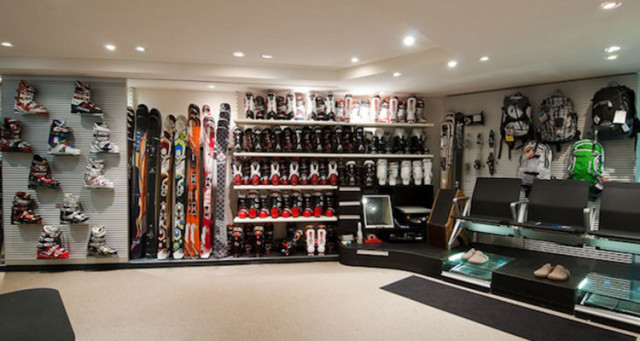Ski Equipment has a very important role in the performance of the ski. But what is meant with ski equipment? Generally, this expression refers to clothing that is ski equipment itself. The ski clothing is a topic large enough and for this, reason is addressed separately (see Skiwear).
Skis, Bindings, Boots and Poles.
The real ski equipment includes skis, bindings, boots and poles. How easy to understand skiing is the most critical element to choose from. Wrong choice of this element can come in very costly both in purely economic terms and in terms of performance and fun. The skis today are much more technical and specific than those in vogue about twenty years ago and. Consequently, the choice becomes much more difficult, for example.
Many beginners are focused on skiing decidedly technical equipment, which can be significantly detrimental in terms of fun because when the skiing technique is not yet established, the tool is not fully exploited and, indeed, can severely limit the skiing. As it is easily understood, the choice of skiing is a matter of some complexity and is treated separately in a particular article: Choosing Skis.
Even the choice of ski boots must be done with a certain criterion; choose the wrong boots can involve both physical discomforts that helpful level problems, particularly in the case of novice skiers. We preferred, as in the case of skis, treat the subject separately (see Ski Boots).
The ski bindings are a critical component of the ski. The ski bindings must fulfill several functions: to attack the ski boots holding to conceal well welded in order not to lose them during the race, but at the same time, they must open quickly in the event of a fall to ensure that the skier does not experience more injuries or less serious.
Unfortunately, it is not possible to verify with certainty the functionality of ski bindings at the time of purchase; attacks apparently good turn out to be problematic because the evidence shows maybe they are not very resistant to low temperatures or because there is an excessive accumulation of snow boots and between attacks.
Even the salt that is spread on some tracks can cause problems because it can corrode the attacks by limiting their effectiveness. You should choose, as far as possible. Ski bindings are easy to insert and remove it, especially if you are a beginner, the difficulty in these operations can be very frustrating.
Less complex is the choice on the ski poles (even ski poles). But how to choose the right height rackets? A quick test consists in challenging them standing: they must form an angle of 90° between the arm and forearm. There are some formulas based on height of the skier (skier height – 50 cm, or 70% of stature).
Many skiers are focused on ski poles a little shorter than the length considered as an ideal (about 5 cm less) because, when dealing with curves, one can stick too long, crawling on the bottom, be more of a hindrance than help. The lacing sticks must ensure a certain level of comfort and should not be neither too tight nor too loose.











